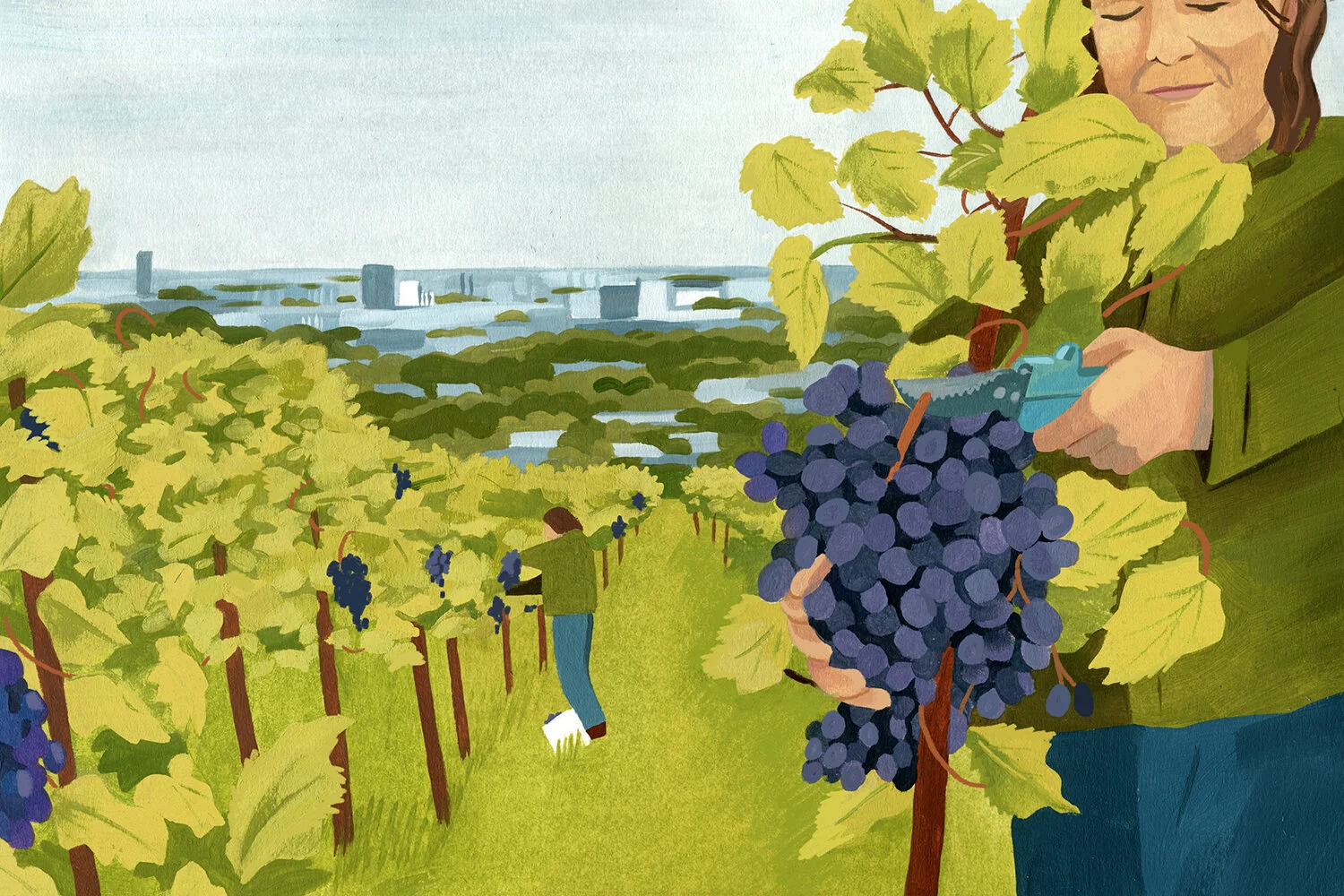Strange Tranquility — The Old Fountain, Old Street, London
Thirty minutes and three pints in, Jim Durrant tells me he’s a quick drinker. I’m struggling to focus, as a heady mix of Oakham Citra and tall tales make my head swim.
Jim has served me countless pints before, but it’s the first time we’ve really spoken. I’ve been drinking in the Old Fountain for nearly a decade, long enough that it feels like a second home—I know which floorboards creak and what time the terrace gets full on a Friday. In most London pubs I’d have seen several landlords come and go during this time, but Jim’s been pouring pints here since the sixties, and he’s run the place since his father passed away in 1971.
Photography by Jonny Garrett and Brad Evans
Today, drinkers know the Old Fountain as a hidden, historic gem; the kind of pub that has no right to exist in a place that has modernised as quickly as Old Street. A facade of Victorian buildings on City Road is all that’s left of its heritage after decades of demolition and gentrification. Most of the buildings here now are glass-fronted skyscrapers, filled with tech companies that give Old Street its nickname—the Silicon Roundabout. But the Old Fountain still stands, immutable in the shadows.
Except, in reality, it changes all the time. Over the course of four (or was it five?) pints, as the sun sets through the crinkled, stained-glass windows, Jim tells me the story of his pub—how it might look like it’s never changed, but actually, it’s reacted to everything that’s happened to him, to the area, and to its people.
Today it’s the best pub in its postcode, with eight perfectly kept cask beers, 12 keg lines, and a fridge filled with curiosities. In the corner, an open kitchen sizzles, clangs and hustles its way through service, cooking sausage and mash, beef burgers you can’t get your chops around, and sticky toffee pudding. It’s come a long way since the Whitbread house the Durrant’s took over in 1964.
***
“If you’re in one area for so long, it’s bound to change,” Jim says in his staccato Cockney accent. “The customers changed too. Going back to the early days a lot of the trade was residential and now it’s effectively zero. I can count on two hands the regulars, and they don’t necessarily live local.”
In the 1960s a pub wasn’t just a place you went to drink, it was the centre of a community. You kept warm there, you ate lunch and drank there, you met your family, had weddings and christenings and wakes there. To attract a bigger crowd than the pub down the road, publicans had to cater to everyone—and all their specific needs. Jim’s father decided the best way to do that at the Old Fountain was to focus on food, so he packed his son off to train at a glitzy steakhouse in west London. In the meantime, he started serving sandwiches in brown paper bags to go.
“They used to queue up for those sandwiches, it blew up! We used to sell trays of them for parties to take away and even supplied [giant taxi firm] Dial a Cab,” Jim recalls. “When I came back [from the steakhouse] I went from trained chef to sandwich maker... sounds bad doesn’t it?”
It wasn’t long before Jim put his new skills to work. While still buttering the bread he launched a small restaurant in the corner of the pub, cooking in an upstairs kitchen and sending the food down via dumbwaiter. The sandwich bar fed the workers while his sixteen seats catered to their directors—and his delicious food brought them all in.
“I did stuff like Dover sole, lobsters, forerib of beef and whole gammons. Heavy hitters. We used to dress whole salmon, put it on a silver dish and put gelatine around it so it looked like it was swimming. Some customers who ate in the steak restaurant started coming here instead.”
In the beginning, the food was more important than the beer, and after Jim’s father died he continued that approach. That’s not to say the pub didn’t also have its fair share of hardened drinkers. In the 1970s and 1980s having a few drinks at lunch was common, and the Old Fountain did a roaring trade by making those pints flow as easily and quickly as possible. Few businesses allowed a full hour, so the staff came up with a system that reduced waiting time to a minimum.
“I had a crowd that used to come in a few times a week—about 30 City boys. They used to phone me up to give me the order in advance and we’d fill a table up with beer, starting at 11.20 just finishing by 12 when they’d turn up. They’d come in and order the same again before they even touched the first pint.”
““While I’m here it’s not going anywhere, and while David my son is here, it’s not going anywhere.””
Old Street was once the home of several big warehousing and logistics companies, as well as engineering firms and a large Post Office depot. Office trade was huge for the Old Fountain, but it couldn’t last. As the lunchtimes became tighter and bosses cracked down on their slightly inebriated workforces, the crowds got smaller throughout the early 1990s.
On top of that, Old Street entered the period of flux it’s been in ever since, as the developers moved in and changed the area at a pace unlike anything before. The directors found showier places to eat, so the food got simpler and heartier, leaving Jim as a more traditional publican. The dishes shifted towards great British pub classics—huge portions of lasagne and chips, and house-made salt beef sandwiches built like doorstops—served from a plate warmer by a lady who looked like she was moonlighting from a local school canteen.
The pub was doing well, though, and its focus had shifted towards quality beer, keeping good cask ales flowing while also providing keg beers to the City audience. They were never tied, but the Durrant’s still leased the pub from Whitbread, who in turn leased it from the local parish church, St Luke’s. It seems the church mistrusted Whitbread and had only been granting it three-year terms. The family had kept a close eye on the situation and, in the early 2000s, an opportunity presented itself. After decades of renewal without gaining a lease extension, Whitbread decided to give up the lease and offered Jim another pub.
***
“I said ‘why would I want to come with you when I have a perfectly running pub? Why would I start all over again?’ So I got in touch with the council, put a solicitor on it and got a 20-year lease! I still have no idea how.”
For three years Jim thought he had a job for life, but then he got a phone call—a tip-off that the pub had just been put up for sale via auction, and would be bid upon at Savilles’ auction house in just three days. He hurried to the auction with no plan and no finances in place, but on arrival, he was told the auction had been pulled for “technical reasons”.
Worried for his livelihood and his home, Jim spent days trying to find out why the auction had been pulled. Had someone made a bid off the books? Had a surveyor found something wrong with the building? Was the church intervening? No one could give him a straight answer, and call after call to the council hit dead ends and hang-up tones. Eventually, someone implied he was free to make an offer despite the technicalities, and, after being refused twice, he bought the pub outright in 2007—remortgaging his house to do so.
Even with gentrification gathering pace, no one could have guessed what an important bit of real estate he had just secured. Without the confusions at the auction, it would likely have been bought for millions by a developer, then demolished and turned into flats or offices. Instead, a 250-year-old pub and a family business of over 40 years had been saved—not that developers aren’t still trying to buy it off him.
“Somebody approached me a little while ago to see if I was interested in selling, saying he could do something with the land. I said ‘oh I know what you can do, but I’m not bothered in the least.’ It’s not a question of money.”
Jim wouldn’t be drawn on how much he was offered but admitted it was well into the millions. His steely resolve is written on his face. He says he dismissed it out of hand, but there is an element of defiance too. This was his father’s pub, this has been his pub for nearly 50 years. It’s not about money and it never was, it’s a way of life for him and his customers, even if that life is constantly evolving.
There are few publicans like Jim Durrant these days, and few pubs like the Old Fountain. Even when the queue is five deep at the bar—and it frequently is—it’s still one of the best places to drink in London. Jim, and his son David, who is lining up to take over the pub, have thrown themselves behind the British brewing revolution, and you’ll always find something from their favourites like Kernel, Siren, and their local brewery, The Five Points.
As developers have tried to rip the heart out of Old Street, Jim has kept it beating. He has offered a sense of continuity to several generations of people working and living in the area, as well as custom to countless independent businesses through his support of small breweries.
He downs the dregs of his beer, and I am conscious again that I’m only halfway through my Kernel Pale.
“I just think it’s a nice old-fashioned pub really, and they’re difficult to find. While I’m here it’s not going anywhere, and while David my son is here, it’s not going anywhere. It needs to be here, you know what I mean? Shall we get another pint?”
***
This interview was originally conducted in early 2017. Sadly, after publishing this feature we learned that Jim had passed away. The Old Fountain remains under the stewardship of his son David, and we would like to send our condolences to the Durrant family.

























